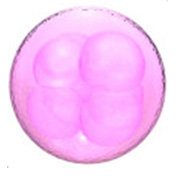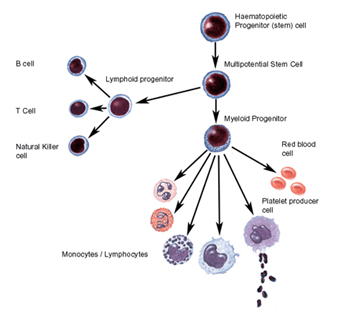
The procedure is particularly indicated for patients with children affected by Fanconi anaemia, β-thalassaemia, sickle cell anemia, Wiscott–Aldrich syndrome (WAS), X-linked adrenoleukodystrophy (X-ALD), X-linked hyper-IgM syndrome (HIGM), X-linked hypohidrotic ectodermal dysplasia with immune deficiency (HED-ID) and other similar disorders, that require a HLA-compatible HSC or bone marrow donor to be effectively treated. The great difficulty in finding a HLA-matched donor, even among family members, led to the application of preimplantation HLA matching also for diseases such as acute lymphoid leukaemia (ALL), acute myeloid leukaemia (AML), or sporadic Diamond-Blackfan anemia (DBA). For these conditions, not involving testing of a causative gene, PGD for HLA matching becomes the primary indication.
Currently stem cells are used to treat serious red blood cell diseases such as Fanconi Anemia. In these situations the cellular medicines containing stem cells are usually infused into the blood, allowing the stem cells to infiltrate the body and adapt and repair the mutated and damaged cells. Over time it’s been seen that people with these red blood cell diseases can be cured, because the stem cells are able to eradicate the disease from the inside out, changing the life of the patient.

Stem cells are also used to cure white blood cell disease such as SCID and they are put into the body with the same technique as described above with red blood cells. Over time the stem cells are able to repair all the cells, literally forcing the damaged cells from the body of the affected person. Stem cells can help even the most severely affected patients, allowing them a new chance at life.
Cancer can also be treated with cellular medicines derived from stem cells. Cancers such as leukemia and neuroblastoma can be transplanted into the bone marrow to generate healthy growth, as well as to replace the cancer cells that currently reside in the body. Cellular medications as well as other medications such as chemotherapy and/or radiation are often a very effective way to cure cancer.
Another area where stem cells are widely used is with tissue repair. Stem cells are commonly used in tissue repair such as heart tissue. Many heart tissues are damaged due to disease or heart attack and stem cells can be transplanted to help repair or replace the damaged cells, offering heart patients the ability to recover and go on with their lives.